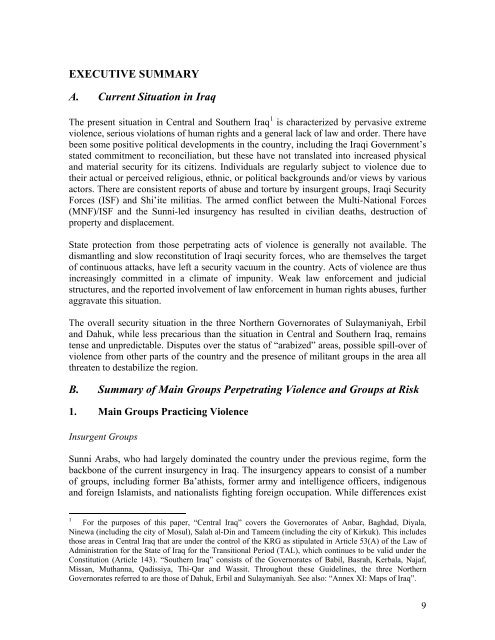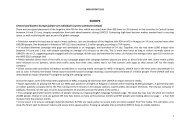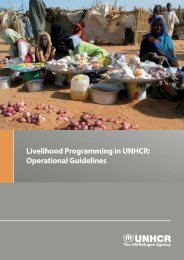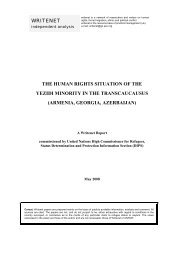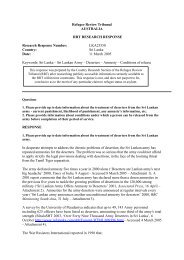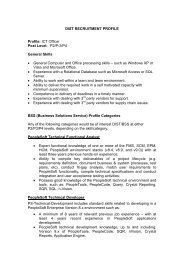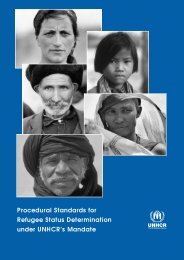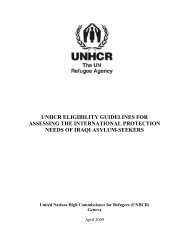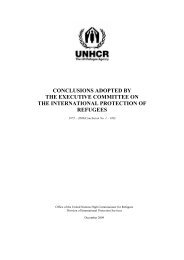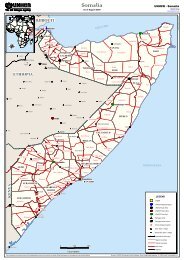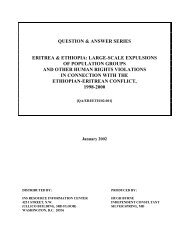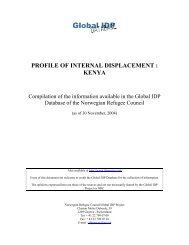UNHCR's ELIGIBILITY GUIDELINES FOR ASSESSING THE ...
UNHCR's ELIGIBILITY GUIDELINES FOR ASSESSING THE ...
UNHCR's ELIGIBILITY GUIDELINES FOR ASSESSING THE ...
You also want an ePaper? Increase the reach of your titles
YUMPU automatically turns print PDFs into web optimized ePapers that Google loves.
EXECUTIVE SUMMARY<br />
A. Current Situation in Iraq<br />
The present situation in Central and Southern Iraq 1 is characterized by pervasive extreme<br />
violence, serious violations of human rights and a general lack of law and order. There have<br />
been some positive political developments in the country, including the Iraqi Government’s<br />
stated commitment to reconciliation, but these have not translated into increased physical<br />
and material security for its citizens. Individuals are regularly subject to violence due to<br />
their actual or perceived religious, ethnic, or political backgrounds and/or views by various<br />
actors. There are consistent reports of abuse and torture by insurgent groups, Iraqi Security<br />
Forces (ISF) and Shi’ite militias. The armed conflict between the Multi-National Forces<br />
(MNF)/ISF and the Sunni-led insurgency has resulted in civilian deaths, destruction of<br />
property and displacement.<br />
State protection from those perpetrating acts of violence is generally not available. The<br />
dismantling and slow reconstitution of Iraqi security forces, who are themselves the target<br />
of continuous attacks, have left a security vacuum in the country. Acts of violence are thus<br />
increasingly committed in a climate of impunity. Weak law enforcement and judicial<br />
structures, and the reported involvement of law enforcement in human rights abuses, further<br />
aggravate this situation.<br />
The overall security situation in the three Northern Governorates of Sulaymaniyah, Erbil<br />
and Dahuk, while less precarious than the situation in Central and Southern Iraq, remains<br />
tense and unpredictable. Disputes over the status of “arabized” areas, possible spill-over of<br />
violence from other parts of the country and the presence of militant groups in the area all<br />
threaten to destabilize the region.<br />
B. Summary of Main Groups Perpetrating Violence and Groups at Risk<br />
1. Main Groups Practicing Violence<br />
Insurgent Groups<br />
Sunni Arabs, who had largely dominated the country under the previous regime, form the<br />
backbone of the current insurgency in Iraq. The insurgency appears to consist of a number<br />
of groups, including former Ba’athists, former army and intelligence officers, indigenous<br />
and foreign Islamists, and nationalists fighting foreign occupation. While differences exist<br />
1 For the purposes of this paper, “Central Iraq” covers the Governorates of Anbar, Baghdad, Diyala,<br />
Ninewa (including the city of Mosul), Salah al-Din and Tameem (including the city of Kirkuk). This includes<br />
those areas in Central Iraq that are under the control of the KRG as stipulated in Article 53(A) of the Law of<br />
Administration for the State of Iraq for the Transitional Period (TAL), which continues to be valid under the<br />
Constitution (Article 143). “Southern Iraq” consists of the Governorates of Babil, Basrah, Kerbala, Najaf,<br />
Missan, Muthanna, Qadissiya, Thi-Qar and Wassit. Throughout these Guidelines, the three Northern<br />
Governorates referred to are those of Dahuk, Erbil and Sulaymaniyah. See also: “Annex XI: Maps of Iraq”.<br />
9


